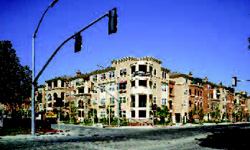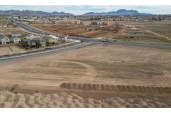MARKETING CONSULTANT KENNETH Agid clutched a price sheet as he peered through the back window of a fourth-floor condominium at a bank of garbage cans, a power line, and a dirty gutter. The list showed the unit was selling for $25,000 more than most of the others in the downtown Southern California mid-rise, so he brought the mistake to the attention of the sales representative.
“That’s no mistake,” the rep corrected him. “That’s the premium for an alley view.”
That alley view, Agid learned over the next few minutes, was among the best in the building, whose other exterior walls were within 10 feet of three similar four-story buildings. “You didn’t get any good light or ventilation and had to worry about whether the person who lived 10 feet away kept his blinds open,” he recalls.
In short order, he had a chance to share his big-city smarts with a client, a top-10 builder who was making a first foray into the urban market after decades as a suburban-only builder.
For units facing a street with a traffic count of 20,000 cars a day, the builder had decided to offer a $50,000 discount to make up for the eyesore and the noise. Instead, Agid talked him into calling that a “street view” and charging $50,000 extra.
They were the first ones to sell.
What passes for pretty in the city might not pass muster in the suburbs. Indeed, says Agid, multifamily urban housing is “virtually the antithesis of … today’s conventional master planned communities in the suburbs.”
Yet the country’s most successful builders of suburban communities are swarming downtown in a throng large enough to rival a New York sidewalk crowd at quitting time.
Quicker than a commuter train, those builders—Pulte, Centex, Toll Brothers, and Hovnanian Enterprises among them—are adding townhomes, lofts, and mid- and high-rise condominium buildings to their realty repertoires, and they’re building them on sparse city lots in neighborhoods where most people wouldn’t have walked alone after dark just a few years ago.
“As much as a demand as there is for moving into suburban areas for larger yards and more square footage, there’s an equally strong demand from those who want to live closer to their place of work, to transportation—closer to the city,” says Derrick Hall, vice president of communications for Los Angeles–based KB Home, which a decade ago built no urban product but will close the year with 6 percent of its stock in high-density downtown homes.
Learn more about markets featured in this article: Los Angeles, CA.



